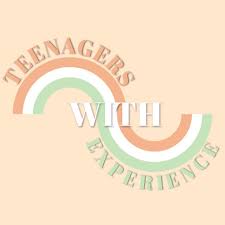|
Work experience can range from lots of different things and reactions, from excitement to dread and nerves to downright fear. Well, I’m here to shed a little light on work experience as a whole and to hopefully reassure you that it isn’t as scary as you may think. In the UK, a lot of schools designate a week(or more) to enable their students (usually those in Year 10 or 11) to go out and practice helping out in a real-life workplace. My school was a bit stingy and forced us to do everything for ourselves- which was very daunting- but, I think that most schools that enforce work experience tend to help you out along the way. The first thing I’d recommend to do is think about what you are interested in. It can even be something that you’re partially interested in and want to learn more about, even if it’s a career path you are 90% sure that you don’t want to go into, you still can’t allow yourself to disclude it entirely. This opportunity is less likely to show you the exact career path you’re meant for, but it’s still important to keep your options open, and with this, it can also give you an insight into what scenarios you hate, don’t mind, and enjoy! Secondly, If you’re interested, I would highly suggest checking to see if any local businesses offer work experience placements to students like yourself. With this stage, I would also recommend asking around to all associates and people that you are close with. They’ll likely know someone who works at a place you’d be interested in working for, and you may even get the placement easier because of knowing this person. I struggled to find a placement, even though I started searching for positions super early, I just couldn’t find a place I was truly invested in that was close enough for my parents to drive me back and for every day for a week. Luckily, when I told my form tutor this, he told me about a friend of his who worked at a vet, and from there, I managed to get a placement, even though they rarely take in students, simply due to this acquaintance. Connections are important when it comes to student occupations. If you still can’t find any student placements, use any online resources that are available to you. My school gave us the link to a website which listed loads of businesses that were open to having work-experience students, and yours may do the same. Although most of these were too far away from us to be realistic, doing this search gave me a good insight into the range of job prospects there are in the world, even if I didn't take much interest in any of them. So, by this stage of the process, you should have a list of around 5-10 possible placements that you are interested in. Before contacting these businesses, I would recommend you talk with your guardian/parent about each of them, and do your research on these businesses, verify that they are all commodious to you. It’s also important to know that you will need to be able to get transport there and back for the entirety of your placement, and this is something you should consider at this stage. After the researching of these businesses, you will have a remainder of about 3-6 companies, the next step is to send an email to them. This should include your name, the name of your school, dates you would like your placement for, description of why you would like the placement (I know this sounds bad, but you can lie here- just as long as you don’t pretend you have any qualifications- but even if you don’t want a career in science, it’s fine to say: ‘I am passionate about science and am considering a future career in this field.’). Make it short but sweet. Then, you wait. If you get multiple companies responding with “yes” then you need to think about which would be the most beneficial placement for you. Don’t feel bad if you need to send an email saying you’ve been offered another placement which you have decided to take instead. I promise it won’t affect them in the slightest. Overall, getting a work experience placement is nowhere near as daunting as it may first seem after trying these steps, which will allow you to get the best out of your placement and will hopefully aid you in the future when trying to decide your career. I hope this helped, - Non Non
0 Comments
|
Categories
All
|

 RSS Feed
RSS Feed
